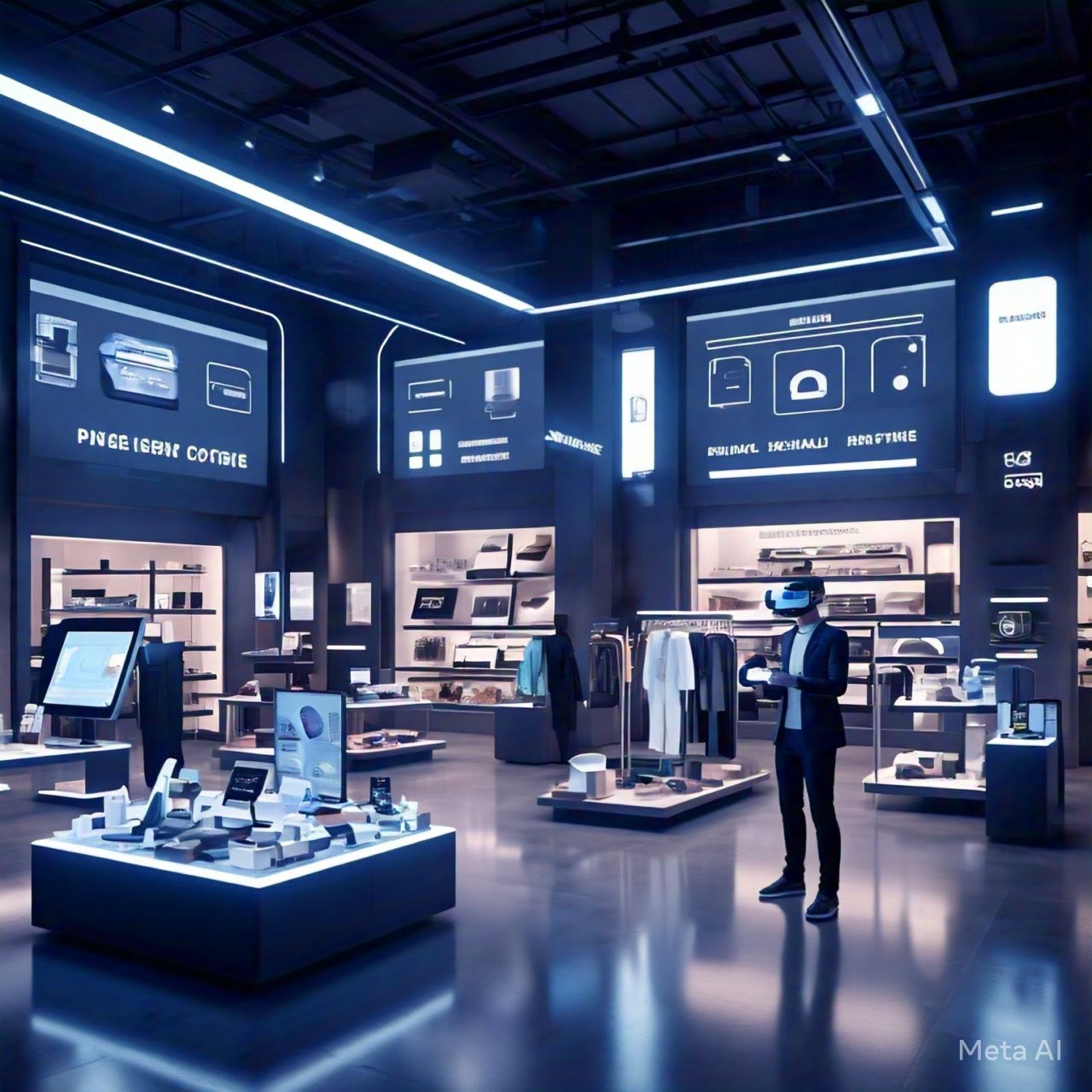The rapid advancements in technology have revolutionized the way businesses interact with their customers. One of the most groundbreaking innovations is augmented reality (AR), which has transformed the shopping experience for both consumers and retailers. By integrating AR into your online shop, you can provide customers with a more immersive, interactive, and personalized experience, significantly enhancing the overall shopping journey.
Integrating augmented reality into your online shop offers a wealth of opportunities to enhance the shopping experience, increase customer satisfaction, and drive sales. By offering features like virtual try-ons, 3D product visualizations, and interactive demos, you can create an engaging, immersive, and personalized shopping environment.
While there are challenges in implementing AR, the benefits it provides make it a valuable investment for retailers looking to stay ahead in the competitive e-commerce landscape. By embracing AR, you can offer customers a unique and memorable shopping experience that not only meets but exceeds their expectations.
Understanding Augmented Reality (AR) in Online Shopping
Augmented reality refers to the technology that overlays digital information—such as images, videos, and 3D models—onto the physical world through a device like a smartphone or tablet. Unlike virtual reality (VR), which immerses the user in a completely virtual environment, AR enhances the real world by adding digital elements to it. This technology is particularly powerful in the realm of e-commerce, where it can bridge the gap between online and in-store shopping experiences.
In the context of online shopping, AR allows customers to virtually interact with products before making a purchase. Whether it’s trying on clothes, visualizing how furniture would look in their home, or previewing makeup on their face, AR creates an engaging, interactive experience that helps customers make informed decisions.
The Benefits of AR Shopping Experiences
Integrating AR into your online store offers numerous advantages, both for your business and for your customers. Below are some of the key benefits:
1. Enhanced Customer Experience
One of the most significant advantages of AR is the enhancement of the customer experience. Online shopping often lacks the tactile experience of shopping in physical stores. AR compensates for this by allowing customers to interact with products in a way that feels real. For example, AR can let users try on clothes virtually, experiment with different colors and styles, or see how a product fits into their environment.
This interactivity helps customers make more confident purchasing decisions, reducing uncertainty about product suitability. By providing a more engaging and realistic shopping experience, AR increases customer satisfaction and brand loyalty.
2. Reduced Return Rates
A common problem for online retailers is the high return rate, particularly for products such as clothing, footwear, and furniture, where customers often face challenges with sizing, color, or fit. AR helps reduce this issue by giving customers the tools to see and experience products in a more accurate way before they buy.
For instance, furniture retailers can offer AR tools that allow customers to place 3D models of products in their homes to see how they fit in terms of size, color, and style. This minimizes the chances of a customer purchasing a product only to find it doesn’t meet their expectations, thereby reducing the likelihood of returns.
3. Increased Engagement and Conversion Rates
AR is an excellent tool for capturing customer attention and boosting engagement. When customers can interact with a product through AR, they are more likely to spend additional time exploring different features, options, and configurations. This increased engagement often leads to higher conversion rates, as customers feel more confident in their purchase decisions.
Furthermore, AR adds an element of novelty and excitement to the shopping experience. The “wow factor” of using AR can encourage customers to share their experiences with friends and family, helping to increase your store’s visibility through word-of-mouth marketing.
4. Personalization of Shopping Experience
AR can provide a highly personalized shopping experience. By integrating AR features that allow customers to customize products, such as choosing colors, patterns, or sizes, you can make the shopping journey more tailored to individual preferences. For example, an online makeup store can use AR to allow customers to try on different shades of lipstick or eyeshadow, helping them find the perfect product for their skin tone.
Personalization enhances the customer experience by making it feel unique and relevant to each shopper, which can lead to stronger customer retention and higher lifetime value.
5. Competitive Advantage
With the growing popularity of e-commerce, businesses need to find ways to differentiate themselves from the competition. Implementing AR in your online shop can set you apart from other retailers by offering a cutting-edge shopping experience. As more consumers become accustomed to AR features, having this technology on your site can position your brand as innovative and forward-thinking.
In addition, offering AR shopping experiences can help you target tech-savvy consumers who are particularly drawn to new technologies. By staying ahead of the curve with AR, you can attract a loyal customer base that values unique and modern shopping experiences.
How to Integrate AR in Your Online Shop
Now that we’ve covered the benefits of AR in online shopping, it’s time to explore how you can integrate AR into your own e-commerce platform. Here are some practical ways to get started:
1. Virtual Try-Ons for Fashion and Beauty Products
One of the most popular applications of AR in online shopping is virtual try-ons. Many fashion and beauty brands have adopted AR to allow customers to “try on” clothing, accessories, and makeup products virtually. Customers can see how an outfit looks on their body or how a pair of shoes fits their feet before making a purchase.
To integrate this feature into your online store, you can use AR software that allows customers to upload their photos or use their device’s camera to see how products look on them. Brands like Warby Parker and L’Oréal have successfully implemented AR try-on tools, which have improved customer engagement and driven sales.
2. Virtual Product Demos
If you sell products that require some demonstration, AR can be an effective way to show how they work. For example, if you sell electronic gadgets or tools, you can create AR experiences that allow customers to see the product in action. By integrating interactive product demos into your website, customers can get a better understanding of the product’s features and functionality, which can increase the likelihood of a purchase.
3. Augmented Reality for Home Décor and Furniture
For retailers in the home décor and furniture sectors, AR offers the perfect solution to help customers visualize how products will look in their homes. By allowing customers to use their smartphones or tablets to place virtual furniture items in their rooms, you can help them make better decisions about size, style, and color.
Many online furniture retailers, such as IKEA, have already integrated AR technology to offer virtual placement of furniture. Customers can see how a sofa, bed, or coffee table will look in their living room or bedroom before buying it, ensuring that the product fits with their existing décor.
4. 3D Product Visualization
Another way to use AR is through 3D product visualization. By incorporating 3D models of your products, customers can view them from all angles and even zoom in for more detail. This is particularly useful for high-end or complex products, such as electronics, jewelry, and luxury goods. Customers can get a closer look at product features that might be difficult to capture through traditional photos, making the online shopping experience more transparent and informative.
5. Interactive Packaging and Labels
AR can also be used to enhance packaging and labeling. For example, by scanning a product’s label with an AR-enabled app, customers can access additional product information, tutorials, or exclusive offers. This feature can be particularly useful for consumers looking for more detailed product specifications or tutorials on how to use a product.
Overcoming Challenges in Implementing AR
While AR can be a powerful tool for enhancing your online shop, it does come with its own set of challenges. These include:
- Cost and Development Time: Developing AR features for your online store can require significant investment in terms of both time and money. You’ll need to work with AR developers and designers to create custom features that work seamlessly with your website.
- Device Compatibility: Not all customers have access to AR-enabled devices, and some may encounter issues with device compatibility. You’ll need to ensure that your AR features are accessible across different platforms, such as smartphones, tablets, and desktop computers.
- User Experience: While AR can enhance the shopping experience, it’s essential to ensure that the technology doesn’t overwhelm or confuse customers. A smooth and intuitive user interface is key to keeping customers engaged and preventing frustration.
Future Trends of AR in Online Shopping
As technology continues to evolve, the possibilities for augmented reality in online shopping will expand even further. Retailers are beginning to explore new and innovative ways to integrate AR to enhance customer experiences and streamline the shopping process. Here are some emerging trends to keep an eye on in the future of AR in e-commerce:
1. AR-Enhanced Social Shopping
Social media platforms have already begun to integrate AR features, allowing users to try on products like makeup and fashion accessories directly through the apps. In the future, we may see even more seamless integration between social shopping and AR, where consumers can share their experiences with friends and followers while virtually trying on or testing products in real-time.
This social commerce aspect will likely increase, making it easier for businesses to leverage AR to influence consumer behavior and encourage impulse purchases. By integrating AR into social platforms, brands will be able to tap into a massive audience and drive more engagement through interactive shopping experiences.
2. Virtual Showrooms and AR Stores
Virtual showrooms are expected to become increasingly common, allowing customers to explore entire product lines in a 3D or AR environment without leaving their homes. These virtual showrooms can simulate a physical retail space, where users can walk around, examine products, and interact with displays as if they were actually inside a store. Brands may create these virtual spaces not just for the online shop, but also to complement physical stores, offering a hybrid shopping experience.
Additionally, we may see AR stores pop up in shopping malls, where users can explore products using AR on their smartphones. These digital stores will allow customers to shop and interact with products virtually, enhancing the traditional brick-and-mortar experience while reducing the need for physical inventory.
3. AR for Product Customization
As AR technology improves, we may see greater capabilities for product customization. Instead of simply visualizing a product before purchase, customers could use AR to personalize items in real-time. For example, shoppers could try on different styles of clothing and choose fabric patterns or colors directly on their devices. Additionally, customers could experiment with 3D-printed items or accessories, choosing customizations and seeing how they will look before making the final purchase.
This shift toward more personalized and on-demand products could lead to a stronger sense of ownership and satisfaction among customers, as they get the opportunity to design products that reflect their personal style or preferences.
4. Integration of Artificial Intelligence (AI) with AR
The combination of AR and AI can further enhance the shopping experience by offering more intelligent and intuitive features. For instance, AI can be used to analyze customer preferences and suggest personalized products based on their behavior. By combining AR’s ability to visualize products and AI’s predictive capabilities, retailers can provide a more streamlined, personalized, and engaging shopping experience.
Imagine an AI-powered AR assistant that helps users choose the perfect product by showing them options in real-time, based on their past purchases, preferences, and even their facial expressions or gestures. The integration of these technologies could result in smarter shopping experiences that cater to individual needs and desires, making online shopping even more seamless and enjoyable.
5. Increased Use of 5G Technology
The adoption of 5G networks is poised to accelerate the use of AR in online shopping. 5G promises faster download and upload speeds, lower latency, and more reliable connections, making it easier for consumers to access and interact with AR content in real-time. This will eliminate many of the current limitations that hinder the widespread adoption of AR, such as lag or delays when loading complex 3D models.
With the increased speed and bandwidth offered by 5G, AR experiences will become even more realistic and immersive, allowing customers to seamlessly interact with products without interruptions. This technology will make it easier for online retailers to offer high-quality AR experiences without compromising on performance.
6. Gamification of AR Shopping
Another exciting trend is the gamification of the shopping experience through AR. By introducing game-like elements such as rewards, challenges, and achievements, retailers can encourage customers to engage more with their online store. For example, an AR scavenger hunt could lead shoppers through different parts of an online store, unlocking exclusive discounts or products along the way.
Gamified shopping experiences not only increase engagement but also create a fun and memorable experience for customers. This approach can drive more traffic to your website, encourage repeat visits, and enhance customer loyalty by providing entertainment along with the opportunity to make purchases.
Best Practices for Implementing AR in Your Online Store

While the potential for AR is immense, successful implementation requires careful planning and execution. To ensure that you maximize the benefits of AR while providing a seamless experience for your customers, here are some best practices to consider:
1. Focus on User Experience
The key to successful AR integration is creating an intuitive and user-friendly experience. Make sure that the AR features on your website or app are easy to access and use. Avoid complicated setup processes and ensure that the interface is simple and visually appealing. Customers should be able to quickly start using the AR features without frustration or confusion.
Test your AR features thoroughly across different devices and operating systems to ensure compatibility and smooth performance. Ensure that the AR experience is responsive and optimized for both desktop and mobile users.
2. Keep It Relevant to Your Products
AR features should be relevant to the products you sell and enhance the customer’s ability to make an informed purchase. For example, if you sell home décor, AR tools that allow customers to see how furniture fits into their space will be valuable. On the other hand, AR features that aren’t directly related to your product line may come off as gimmicks and detract from the shopping experience.
It’s important to prioritize AR features that genuinely benefit your customers and improve their ability to make purchasing decisions.
3. Ensure Quick Load Times and Low Latency
AR applications are typically resource-intensive, so it’s crucial to ensure that the AR content loads quickly and smoothly. Delays, lag, or poor-quality visuals can turn customers off and drive them away. To avoid this, optimize your AR content and consider using high-quality but lightweight 3D models.
As mentioned earlier, the use of 5G networks will help improve speed and reduce latency, but it’s still essential to optimize your AR experience for all types of connections.
4. Offer Multiple AR Features for Engagement
Different customers have different needs, so offering a variety of AR features will allow you to appeal to a broader audience. Whether it’s a virtual try-on, a 3D product view, or interactive demos, offering a variety of AR experiences will keep customers engaged and encourage them to spend more time exploring your online store.
5. Provide Clear Instructions
Since AR is still relatively new for many consumers, it’s essential to provide clear instructions on how to use the AR features. Whether it’s through a tutorial or on-screen guidance, make sure customers know how to access and interact with the AR tools. You can use tooltips, pop-ups, or even short videos to explain the process and help users get the most out of their AR shopping experience.
Conclusion
Augmented reality is quickly becoming a key component in the evolution of online shopping. By integrating AR into your online store, you can create a more immersive, interactive, and personalized experience for your customers. The technology not only improves engagement and conversion rates but also helps reduce return rates, enhance customer satisfaction, and set your business apart from competitors.
As the technology advances and becomes more accessible, the future of AR in e-commerce holds limitless potential. By staying ahead of the curve and embracing AR, you can create a shopping experience that not only meets but exceeds customer expectations, helping you to build stronger relationships and drive long-term success in the digital marketplace.









